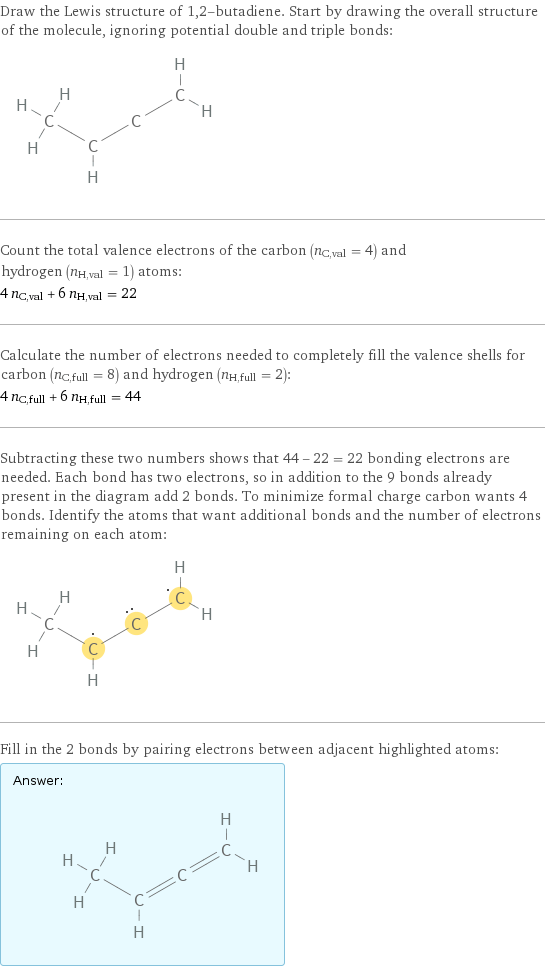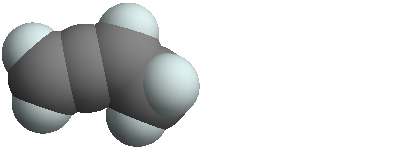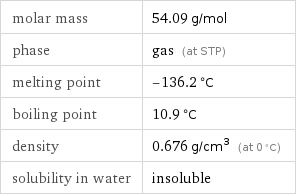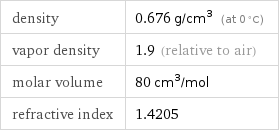Input interpretation

1, 2-butadiene
Chemical names and formulas

formula | C_4H_6 name | 1, 2-butadiene IUPAC name | buta-1, 2-diene alternate names | 1-methylallene | allene, methyl- | buta-1, 2-diene | methylallene mass fractions | C (carbon) 88.8% | H (hydrogen) 11.2%
Lewis structure

Draw the Lewis structure of 1, 2-butadiene. Start by drawing the overall structure of the molecule, ignoring potential double and triple bonds: Count the total valence electrons of the carbon (n_C, val = 4) and hydrogen (n_H, val = 1) atoms: 4 n_C, val + 6 n_H, val = 22 Calculate the number of electrons needed to completely fill the valence shells for carbon (n_C, full = 8) and hydrogen (n_H, full = 2): 4 n_C, full + 6 n_H, full = 44 Subtracting these two numbers shows that 44 - 22 = 22 bonding electrons are needed. Each bond has two electrons, so in addition to the 9 bonds already present in the diagram add 2 bonds. To minimize formal charge carbon wants 4 bonds. Identify the atoms that want additional bonds and the number of electrons remaining on each atom: Fill in the 2 bonds by pairing electrons between adjacent highlighted atoms: Answer: | |
3D structure

3D structure
Basic properties

molar mass | 54.09 g/mol phase | gas (at STP) melting point | -136.2 °C boiling point | 10.9 °C density | 0.676 g/cm^3 (at 0 °C) solubility in water | insoluble
Units

Gas properties (at STP)

density | 0.676 g/cm^3 (at 0 °C) vapor density | 1.9 (relative to air) molar volume | 80 cm^3/mol refractive index | 1.4205
Units

Thermodynamic properties

specific heat of formation Δ_fH° | gas | 3 kJ/g molar heat of formation Δ_fH° | gas | 162.3 kJ/mol molar heat of vaporization | 23.4 kJ/mol | specific heat of vaporization | 0.4326 kJ/g | molar heat of combustion | 2599 kJ/mol | specific heat of combustion | 48.05 kJ/g | molar heat of fusion | 6.96 kJ/mol | specific heat of fusion | 0.129 kJ/g | (at STP)
Chemical identifiers

CAS number | 590-19-2 Beilstein number | 1730808 PubChem CID number | 11535 SMILES identifier | CC=C=C InChI identifier | InChI=1/C4H6/c1-3-4-2/h4H, 1H2, 2H3 EU number | 209-674-2
Safety properties

flash point | -76 °C lower explosive limit | 2% (concentration in air) upper explosive limit | 12% (concentration in air)

DOT hazard class | 2.1 DOT numbers | 1012